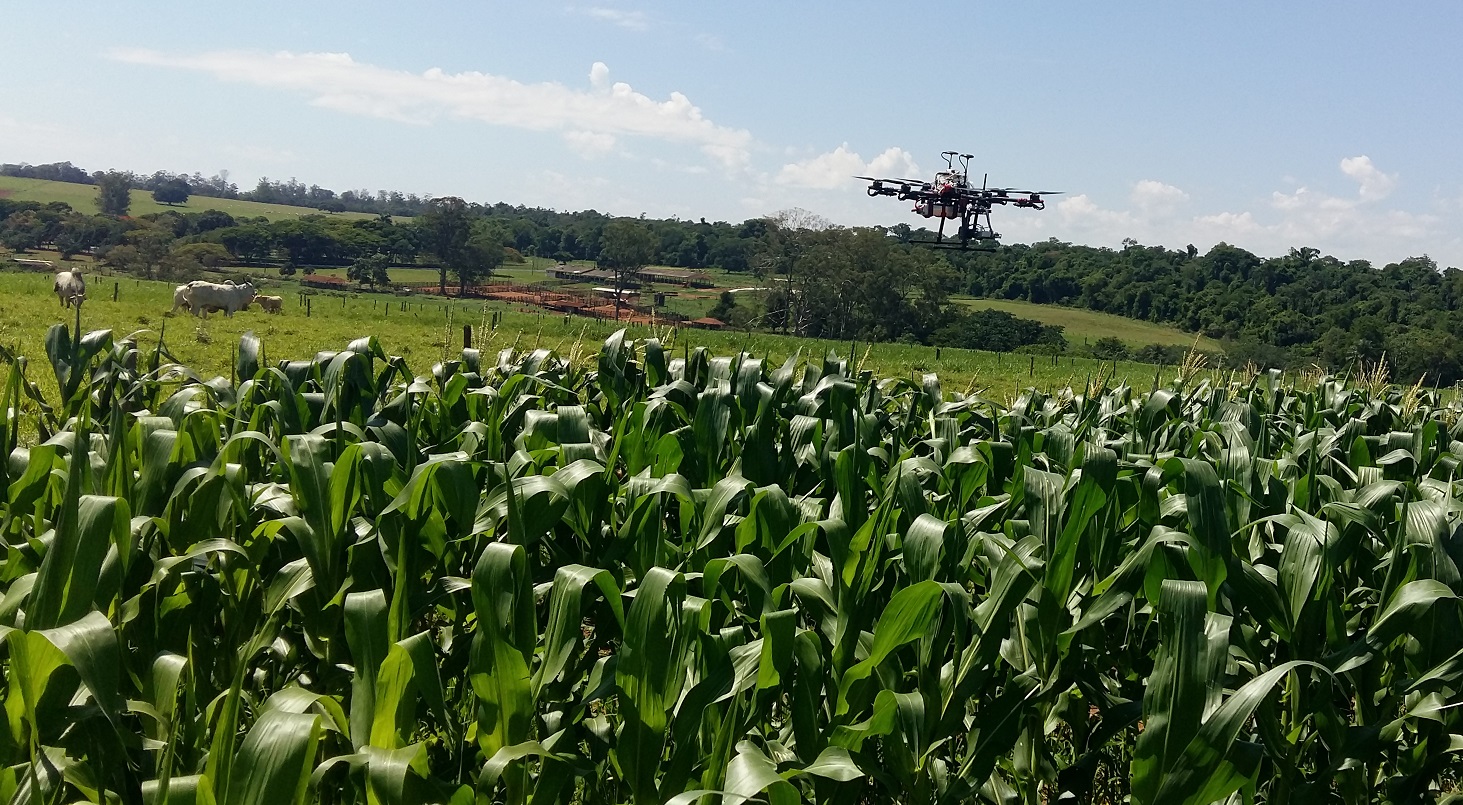Cotton growers bet in agriculture 4.0 to ensure the sustainability of the crop
Cotton growers bet in agriculture 4.0 to ensure the sustainability of the crop
Photo: Joana Silva

The partnership between Embrapa Instrumentation and IMAmt establishes the use of drones equipped with advanced accessories, which collect basic information about the crop such as pests and diseases.
With an average production estimated by the National Food Supply Company (Conab) in 1.3 million tons of cotton wool in the 2017/2018 harvest, cotton growers of the state of Mato Grosso are investing in emerging techniques, such as precision agriculture (PA) - which adopts information and communication technologies (ICTs) - to optimize productivity and reduce costs.
It is with this proposal that technicians from the Mato Grosso Cotton Institute (IMAmt), from major producing groups and private companies are going to meet with researchers from Embrapa Instrumentation, in São Carlos, SP, on Tuesday and Wednesday (12 and 13) to discuss partnership projects that allow the use of technological solutions aiming at the sustainability of the crop.
One of the technologies is the drone used to capture multispectral and hiperspectral high resolution aerial images, with infrared sensors, capable of identifying the variability in the crop to obtain economic and environmental returns. At the Precision Agriculture National Reference Laboratory (Lanapre), the group will have the oppportunity to learn about research such as the systems developed to speed up and facilitate the capture of field images with the use of drones.
“The images, combined with good geoprocessing techniques, identify with precision the existence of pests and imperfections, soil problems, areas affected by erosion and river aggradation, areas attacked by nematoids, and water deficiency, because a computer program indicates these problems that cause damages in the properties with specific colors”, explains the Embrapa Instrumentation researcher Lúcio André de Castro Jorge.
Amando Pires Júnior, IMAmt's technical coordinator for precision agriculture, says that the group hopes to get to know available technologies developed at Embrapa Instrumentation and discuss basic training in the geoprocessing of the images obtained through the drones.
Another issue in the agenda for the group meeting is discussing advances with the use of unmanned air vehicles in two farms, the Farroupilha farm, which is 52-hectares large, located in the village of Pedra Preta, Mato Grosso, and belongs to the Sementes Petrovina group; and the Três Lagoas farm, with 200 hectares in the town of Sapezal, property of the Scheffer group.
Embrapa Instrumentation has been working in partnership with the IMAmt for at least a decade, with research involving soil science and precision agriculture, which will have to be extended and strengthened at this most recent stage.
Now the researchers of the research center in São Carlos are going to conduct a study on the cotton from the two selected farms in Mato Grosso state, with the support of IMAmt. They hope to understand the reason why some areas produce unevenly.
For the coordinator of the Precision Agriculture Network, Ricardo Inamasu, with the advance of Brazilian agriculture and with the maturity of the subject and of geotechnologies, precision agriculture has developed methodologies that can be applied in the crops and regions where spatial variability is present. According to him, employing the technique is based on the acquisition of data on suitable scale and frequency, on the interpretation and analysis of such data, and on management and implementation of a response on a spatial and time scale.
State potencializes use of technology
The search for technological advances ensures the susustainability of the crop and keeps the state a leader in producing cotton in Brazil.
According to production estimates for the 2017/2018 harvest, Mato Grosso will be responsible for the equivalent to approximately 67% of the Brazilian production, in an area of 783,000 ha out of a total of 1.2 million in the country. It accounts for about 70% of Brazil's cotton wool exports, a country which in turn is among the top five world producers and exporters of the natural fiber.
Approximately 40% of the production of Mato Grosso is consumed in the domestic market and the remainder is exported to countries such as Vietnam, Bangladesh, Indonesia, China, and South Korea, among others.
Joana Silva (MTb 19.554/SP)
Embrapa Instrumentation
Press inquiries
instrumentacao.imprensa@embrapa.br
Phone number: +55 16 2107 2901
Martha Baptista (Collaboration)
Associação Mato-grossense do Algodão (AMPA)
Further information on the topic
Citizen Attention Service (SAC)
www.embrapa.br/contact-us/sac/

